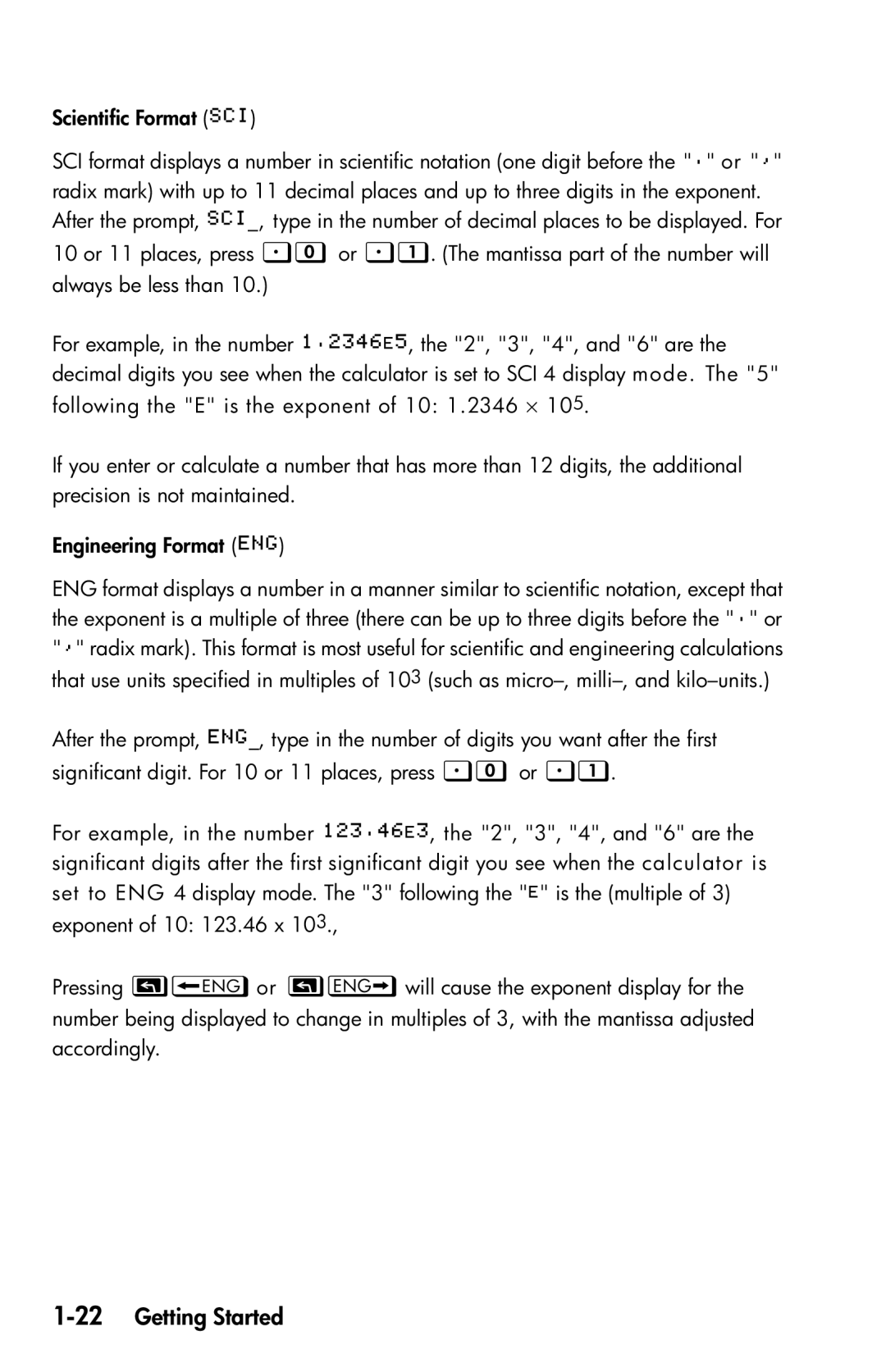Scientific Format ()
SCI format displays a number in scientific notation (one digit before the "" or "" radix mark) with up to 11 decimal places and up to three digits in the exponent. After the prompt, _, type in the number of decimal places to be displayed. For 10 or 11 places, press or . (The mantissa part of the number will always be less than 10.)
For example, in the number , the "2", "3", "4", and "6" are the decimal digits you see when the calculator is set to SCI 4 display mode. The "5" following the "E" is the exponent of 10: 1.2346 ⋅ 105.
If you enter or calculate a number that has more than 12 digits, the additional precision is not maintained.
Engineering Format ()
ENG format displays a number in a manner similar to scientific notation, except that the exponent is a multiple of three (there can be up to three digits before the "" or "" radix mark). This format is most useful for scientific and engineering calculations that use units specified in multiples of 103 (such as
After the prompt, _, type in the number of digits you want after the first significant digit. For 10 or 11 places, press or .
For example, in the number , the "2", "3", "4", and "6" are the significant digits after the first significant digit you see when the calculator is set to ENG 4 display mode. The "3" following the "" is the (multiple of 3) exponent of 10: 123.46 x 103.,
Pressing @or 2will cause the exponent display for the number being displayed to change in multiples of 3, with the mantissa adjusted accordingly.
